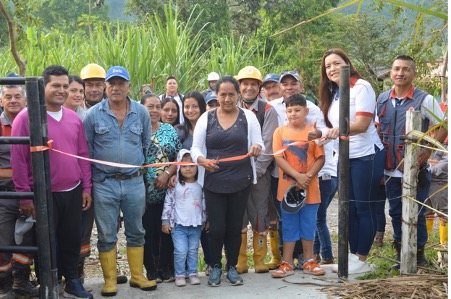Libero Copper & Gold Corporation (TSXV:LBC) has completed the new San Jose access to the Mocoa porphyry copper-molybdenum project located in Putumayo, Colombia.
The access is 2,100m in length for the transport of drills and supplies, which eliminates expensive helicopter support for drilling activities around the deposit area. In accordance with the cooperation agreement signed with Montclar, the access was co-planned with the community. The process ensures the new San Jose access supports the advancement of the project and the long-term development plans of the community of Montclar including improved access to established economic activities, such as artisanal raw sugarcane production.
Roadmap to Colombian Copper Production
Colombia is developing a National Strategic Plan for the Just Energy Transition that includes roadmaps for the re-industrialization of the country based on production chains to support the energy transition and diversification of exports.
Currently over half of Colombia’s and Putumayo’s exports are oil and coal. For this reason, the government has set forth a fundamental priority in relation to the productive transformation of Colombia, where copper is viewed as a key opportunity and key component of the transition.
Libero Copper is working together with the Ministry of Industry & Commerce, Ministry of Energy & Mines, National University of Colombia (UNAL), local businesses, communities, and green technology start-ups to develop a copper-based production chain in Putumayo and Colombia starting with recycled copper but underpinned by the Mocoa porphyry copper-molybdenum deposit.
About the Mocoa Porphyry Copper-Molybdenum Deposit
The Mocoa deposit is located in the department of Putumayo, 10km from the town of Mocoa. Libero Copper’s district scale holdings cover over 1,000sq. km encompassing most of the Jurassic porphyry belt in southern Colombia.
Mocoa was discovered in 1973 when the United Nations and the Colombian government conducted a regional stream sediment geochemical survey. Between 1978 and 1983, an exploration program was carried out that consisted of geological mapping, surface sampling, ground geophysics (IP, magnetics), 31 diamond drill holes totalling 18,321m and metallurgical test work cumulating in a positive pre-feasibility study (the pre-feasibility study is historical in nature only and should not be relied upon as it is not NI 43-101 compliant). B2Gold subsequently executed diamond drill programs in 2008 and 2012.
A pit constrained inferred resource at Mocoa contains 636Mt of 0.45% copper equivalent (0.33% Cu and 0.036% Mo) generated using $3/lb Cu and $10/lb Mo, containing 4.6 billion pounds of copper and 511 million pounds of molybdenum. The Mocoa deposit appears to be open in both directions along strike and at depth. Current work on the property has identified additional porphyry targets including the possible expansion of known mineralization.
The Mocoa deposit is situated in the Eastern Cordillera of Colombia, a 30km-wide tectonic belt underlain by volcano-sedimentary, sedimentary and intrusive rocks that range in age from Triassic-Jurassic to Quaternary and by remnants of Paleozoic metasediments and metamorphic rocks of Precambrian age. This belt hosts several other porphyry-copper deposits in Ecuador, such as Mirador (438Mt measured and indicated at 0.61% Cu and 235Mt inferred at 0.52% Cu), San Carlos (600Mt inferred at 0.59% Cu), Panantza (463Mt inferred at 0.66% Cu)3 and Solaris’ Waritza, located in Ecuador.
Copper-molybdenum mineralization is associated with dacite porphyry intrusions of the Middle Jurassic age that are emplaced into andesitic and dacitic volcanics. The Mocoa porphyry system exhibits a classical zonal pattern of hydrothermal alteration and mineralization, with a deeper central core of potassic alteration overlain by sericitization and surrounded by propylitization.
Mineralization consists of disseminated chalcopyrite, molybdenite and local bornite and chalcocite associated with multiphase veins, stockwork and hydrothermal breccias. The Mocoa deposit is roughly cylindrical, with a 600m diameter. High-grade copper-molybdenum mineralization continues to depths in excess of 1,000m.
For further information please visit: https://www.liberocopper.com/












